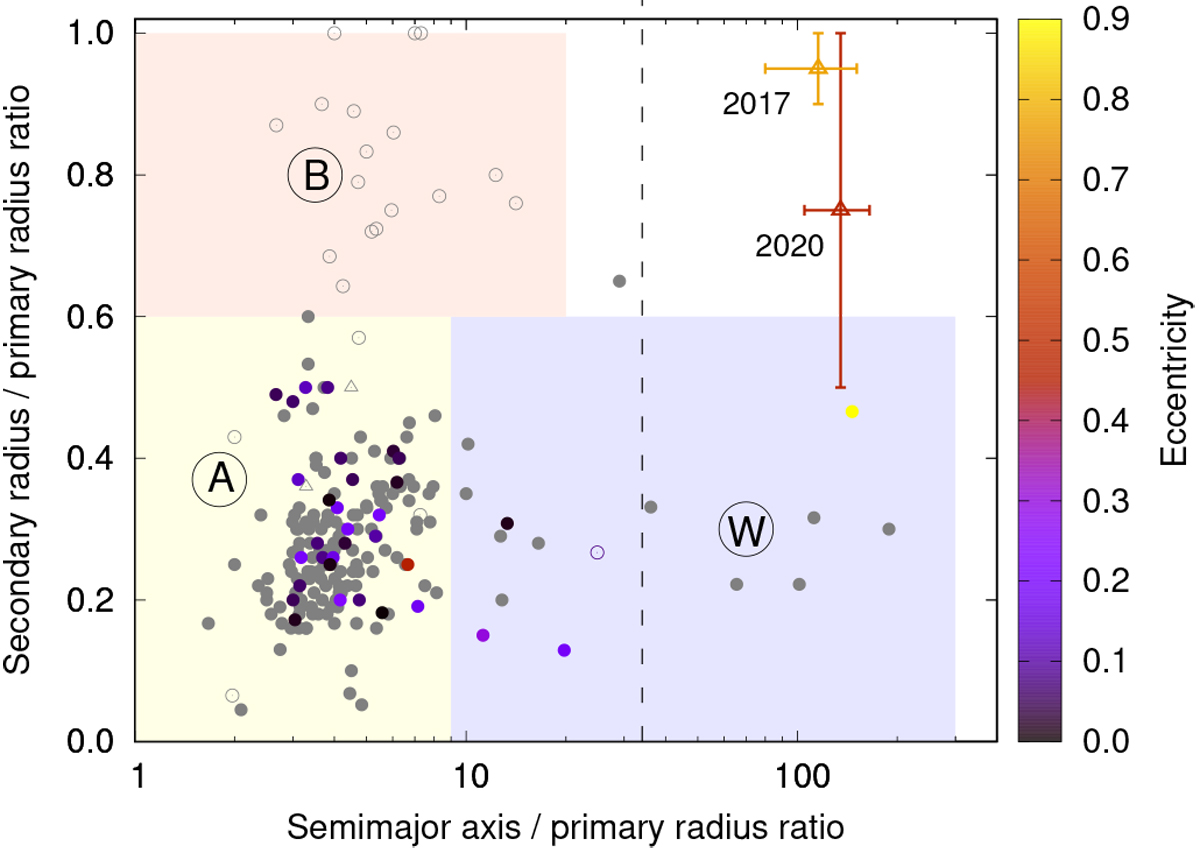Fig. 7

Comparison of 288P with the known binary systems from Johnston (2019). Filled circles represent binaries with a primary rotation period Tp < 5 h, open circles represent those with Tp > 5 h, while triangles represent systems with unknown Tp. Grey colourindicates unknown eccentricity. Letters A, B, and W refer to the three main binary populations defined in Pravec & Harris (2007), where group A has small size ratios and fast-rotating primaries, B has doubly synchronous systems with a high size ratio, and W are wide, asynchronous binaries. The vertical dashed line indicates the 34 rp limit out to which binaries can form directly from rotational fission. The error bars show the solutions obtained in this work and in Agarwal et al. (2017) from visit 1–12 data for comparison. As component radii we used those of volume-equivalent spheres with a 20% uncertainty. This plot has been updated from Fig. 3 in Agarwal et al. (2017).
Current usage metrics show cumulative count of Article Views (full-text article views including HTML views, PDF and ePub downloads, according to the available data) and Abstracts Views on Vision4Press platform.
Data correspond to usage on the plateform after 2015. The current usage metrics is available 48-96 hours after online publication and is updated daily on week days.
Initial download of the metrics may take a while.


